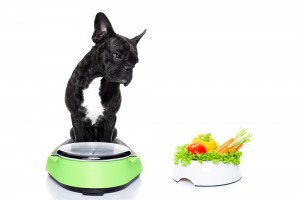 You may not be aware, but pet obesity has reached epidemic proportions in the U.S. In 2014, the Association for Pet Obesity Prevention (APOP)conducted it’s annual National Pet Obesity Awareness Day Survey by partnering with veterinarians and establishing that 52.7 percent of dogs and 57.9 percent of cats are overweight or obese. That’s nearly nearly 100,000,000 cats and dogs, which is an unacceptable statistic.
The problem is so bad that there’s even a Pet Obesity Awareness Day(October 7, 2015), but so many owners don’t recognize the problem in their pets nor take sufficient action to prevent weight gain in the first place.
Is being overweight or obese bad for pets?
Yes, being overweight or obese is bad for pets. Numerous health problems, some of which are irreversible and all of which compromise quality of life, affect plus-sized pets.
Obesity-related ailments negatively impact many body systems, including:
You may not be aware, but pet obesity has reached epidemic proportions in the U.S. In 2014, the Association for Pet Obesity Prevention (APOP)conducted it’s annual National Pet Obesity Awareness Day Survey by partnering with veterinarians and establishing that 52.7 percent of dogs and 57.9 percent of cats are overweight or obese. That’s nearly nearly 100,000,000 cats and dogs, which is an unacceptable statistic.
The problem is so bad that there’s even a Pet Obesity Awareness Day(October 7, 2015), but so many owners don’t recognize the problem in their pets nor take sufficient action to prevent weight gain in the first place.
Is being overweight or obese bad for pets?
Yes, being overweight or obese is bad for pets. Numerous health problems, some of which are irreversible and all of which compromise quality of life, affect plus-sized pets.
Obesity-related ailments negatively impact many body systems, including:
- Heart and blood vessels- high blood pressure, reduced blood circulation, etc.
- Skin- skin fold dermatitis (skin inflammation), infection (bacteria, yeast), etc.
- Immune System- cancer, immune mediated (“autoimmune”) disease, etc.
- Muscles, joints, ligaments, tendons- arthritis, degenerative joint disease, tendon and ligament injuries, traumatic disc rupture, etc.
- Glandular system- hypothyroidism, diabetes, pancreatitis, kidney and liver disease, etc.
- Schedule an examination with your veterinarian
- Implement portion control and calorie restriction
- Eliminate processed pet foods and incorporate whole foods
- Feed more frequent meals
- Make daily exercise a priority
